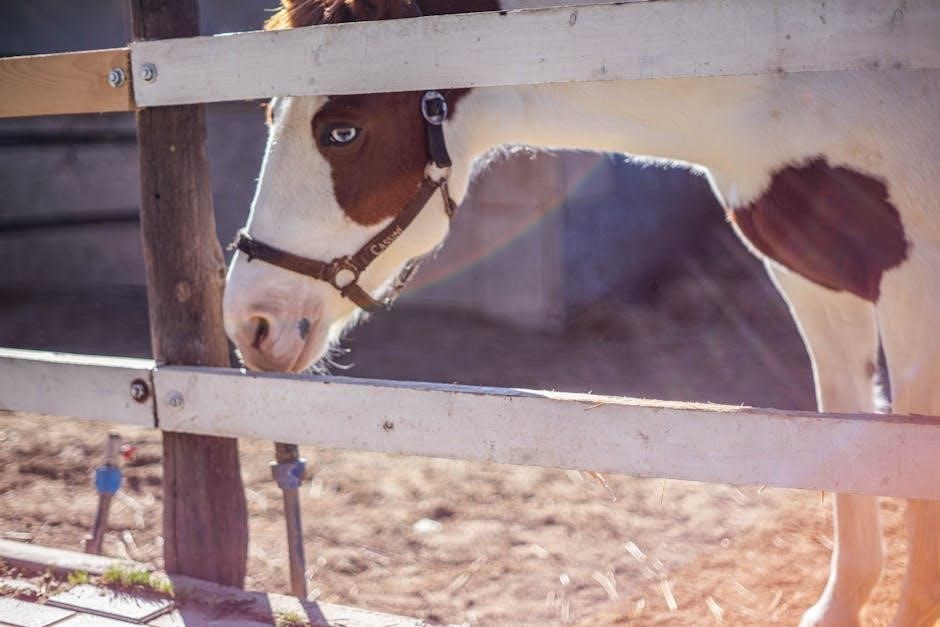Rust-Oleum Farm and Implement Paint is a heavy-duty, weather-resistant coating designed for farm equipment and metal surfaces, offering durability and a professional finish when applied correctly.
Overview of Rust-Oleum Farm and Implement Paint
Rust-Oleum Farm and Implement Paint is a premium, heavy-duty coating specifically formulated for agricultural equipment and implements. Designed to withstand harsh outdoor conditions, it offers exceptional durability, weather resistance, and protection against UV rays and corrosion. Available in a range of colors, including Gloss White and Cardinal Red, this paint is ideal for tractors, trailers, and other farm machinery. It is part of the Rust-Oleum Farm & Implement line, which includes compatible primers and topcoats to ensure a professional, long-lasting finish. The paint is known for its high-gloss retention and ability to maintain its appearance even after prolonged exposure to the elements. Its ease of application and quick-drying properties make it a popular choice among farmers and equipment enthusiasts.
Importance of Proper Application Instructions
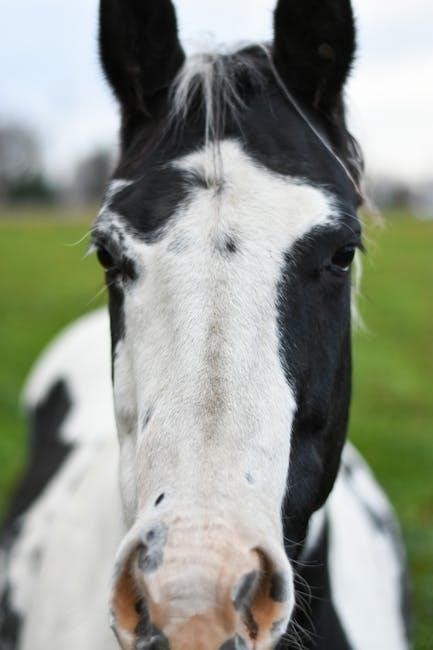
Proper application of Rust-Oleum Farm and Implement Paint is essential to ensure optimal performance and longevity. Following the manufacturer’s instructions guarantees a strong bond between the paint and the surface, providing superior protection against rust, corrosion, and weathering. Incorrect application can lead to issues such as peeling, uneven coverage, or premature wear, reducing the paint’s effectiveness. Adhering to the recommended steps, including surface preparation, primer application, and drying times, ensures a professional-grade finish. Environmental factors, such as temperature and humidity, also play a critical role in the painting process. By carefully following the guidelines, users can achieve a durable, high-quality result that withstands the rigors of farm equipment use. Proper application is key to maximizing the paint’s benefits and extending the life of the equipment. Always refer to Rust-Oleum’s official instructions for best outcomes.
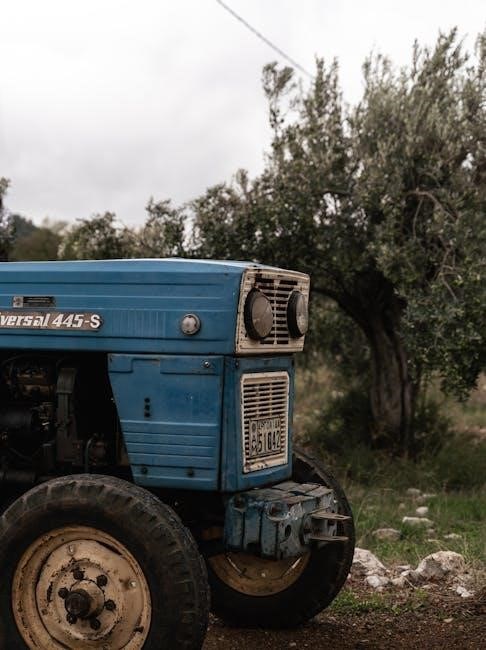
Preparation for Painting
Proper preparation ensures optimal paint adhesion and durability. Clean and degrease the surface thoroughly, removing dirt, oil, and grease. Remove rust and prepare metal surfaces for painting.
Surface Cleaning and Degreasing
Surface cleaning and degreasing are essential steps before painting. Use a high-quality degreaser to remove dirt, oil, and grease from the metal surface. Apply the degreaser evenly, scrub thoroughly with a wire brush, and rinse with clean water. For tough grime or stains, let the degreaser sit for a few minutes before scrubbing. Avoid using harsh chemicals that could damage the metal or interfere with paint adhesion. After cleaning, inspect the surface to ensure all contaminants are removed. Proper cleaning ensures better paint adhesion and a longer-lasting finish. Allow the surface to dry completely before proceeding to the next steps in the painting process.
Rust Removal and Metal Preparation
Rust removal and proper metal preparation are critical for ensuring a strong bond between the paint and the surface. Start by scrubbing the metal with a wire brush or sandpaper to remove loose rust and flaking material. For stubborn rust, use a rust converter or a chemical rust remover according to the product’s instructions. Once the rust is removed, rinse the surface with clean water to eliminate any residue. Allow the metal to dry completely before proceeding. For smooth adhesion, lightly sand the area to create a rough surface for the paint to grip. If the metal is new or has no rust, ensure it is free from mill scale or contaminants. Proper preparation ensures a durable and long-lasting finish.
Application Instructions
Shake the can thoroughly before use. Apply paint in a steady, back-and-forth motion, maintaining a consistent distance from the surface. Avoid drips by using thin, even coats.
Choosing the Right Tools (Brush, Roller, or Spray)
For Rust-Oleum Farm and Implement Paint, selecting the right tool ensures a smooth, even finish. Brushes are ideal for detailed work or small areas, offering precise control. Rollers are best for large, flat surfaces like tractor hoods or panels, covering more area quickly. Spray paint is highly recommended for its ease of use and rapid coverage, especially for complex shapes or textured surfaces. Always shake spray cans thoroughly before application to achieve consistent color. Regardless of the tool chosen, apply thin, even coats to prevent drips and runs. For optimal results, use Rust-Oleum’s spray paint products, such as the 280132 Farm & Implement Gloss White Spray Paint, designed specifically for durability and weather resistance on farm equipment.
Applying Primer for Maximum Adhesion
Applying primer is essential for achieving maximum adhesion and durability with Rust-Oleum Farm and Implement Paint. Start by ensuring the surface is clean and free of rust, as outlined in the preparation steps. Use Rust-Oleum’s Heavy Duty Primer, applying it in thin, even coats. Allow the first coat to dry completely, following the recommended drying time, before applying additional coats. Typically, 2-3 primer coats are sufficient for optimal results. Proper primer application ensures the paint adheres well and withstands harsh outdoor conditions. Skipping this step can lead to peeling or uneven coverage. For best results, use Rust-Oleum’s primer products, such as their Farm & Implement Heavy Duty Primer, designed to enhance paint performance on metal surfaces.
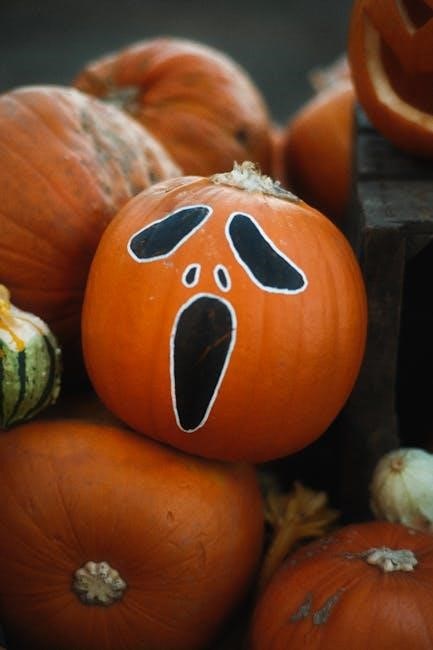
Drying and Curing Times
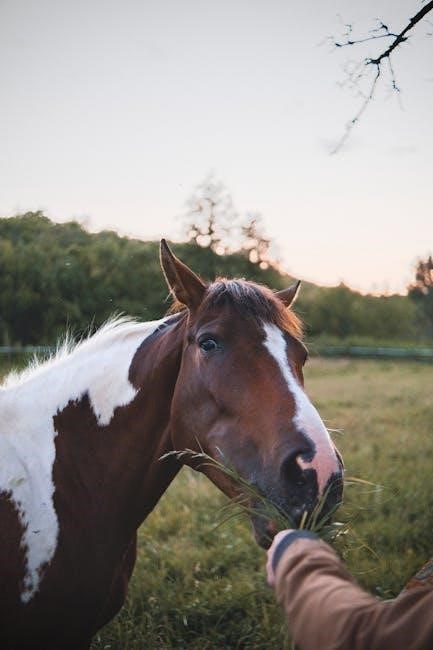
Rust-Oleum Farm and Implement Paint typically dries to the touch in 24 hours. Full cure time for a durable finish is 3 days.
Total Drying Time Between Coats
Allow the first coat of Rust-Oleum Farm and Implement Paint to dry completely before applying the next coat. The recommended drying time between coats is 24 hours. This ensures proper adhesion and a smooth, even finish. Factors like temperature and humidity can affect drying time, so it’s important to wait until the surface is dry to the touch and free of tackiness. Applying a second coat too soon can lead to uneven coverage or peeling. Always ensure the surface is clean and dry before re-coating to achieve the best results and long-lasting durability.
Full Cure Time for Durable Finish
Rust-Oleum Farm and Implement Paint requires a full cure time of 7 days to achieve maximum durability and hardness. During this period, avoid exposing the painted surface to heavy rain, moisture, or extreme temperatures, as this can interfere with the curing process. Allow the final coat to dry completely according to the recommended drying time between coats before returning the equipment to service. Proper curing ensures the paint forms a strong, weather-resistant bond with the metal surface. For optimal results, avoid touching or washing the painted area during the curing period. Following these guidelines will ensure a long-lasting, professional-grade finish that withstands the rigors of farm use.
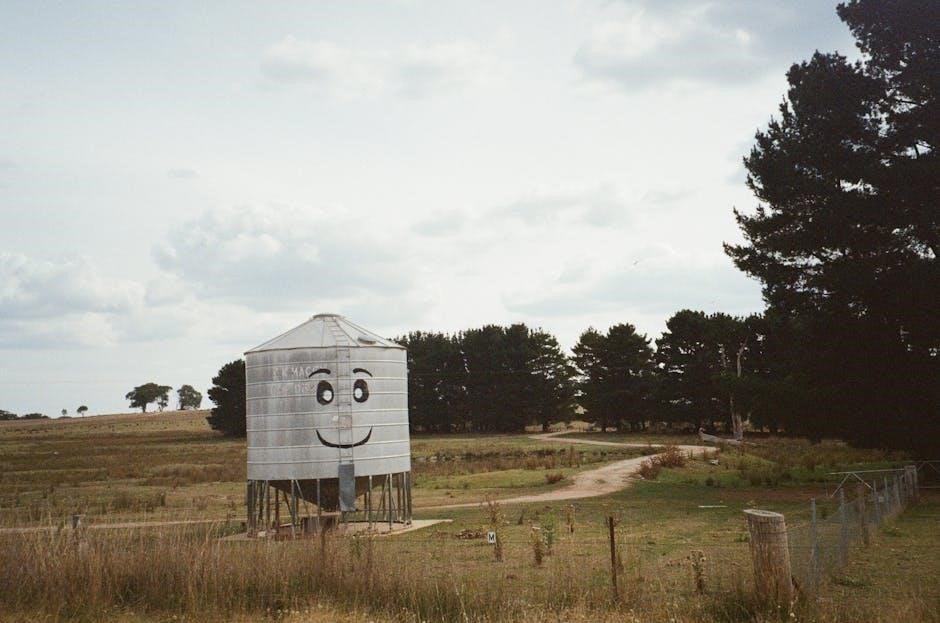
Safety Precautions
Wear protective gloves, safety glasses, and a mask. Work in a well-ventilated area, away from open flames. Ensure the surface is dry and free from dust. Follow all safety instructions on the product label to avoid health risks and ensure proper adhesion.
Personal Protective Equipment (PPE)
Wearing the right PPE is essential when using Rust-Oleum Farm and Implement Paint. Always wear protective gloves to prevent skin irritation and ensure a secure grip on tools.
Safety glasses or goggles are crucial to protect your eyes from paint splatters or debris. A dust mask or respirator is recommended to avoid inhaling fumes or particles.
Additionally, wear long sleeves, pants, and closed-toe shoes to minimize skin exposure. Consider using a paint suit or coveralls for extra protection, especially for large projects.
Proper ventilation is key, so work in a well-ventilated area or use a fan to reduce fume concentration. Keep a fire extinguisher nearby and avoid open flames or sparks.
Following these PPE guidelines ensures a safer and more efficient painting process, helping you achieve professional results while protecting your health.
Proper Ventilation and Workspace Setup
Ensuring proper ventilation and a well-prepared workspace is critical for a safe and successful painting experience. Always work in a well-ventilated area, such as an open garage or outdoors, to prevent inhaling paint fumes.
If working indoors, open windows and use fans to circulate air. Keep the workspace clean and free from clutter to avoid tripping hazards or accidental spills.
Cover the floor and surrounding surfaces with drop cloths or tarps to protect them from paint droplets. Avoid working in confined or poorly ventilated spaces, as this can increase the risk of fume exposure.
Good lighting is essential for even coverage and safety. Organize your tools and materials within easy reach to streamline the process and minimize distractions.
Maintenance and Touch-ups
Regular cleaning prevents dirt buildup, ensuring longevity. Touch up scratches promptly with the same Rust-Oleum product for consistent color and protection. Inspect regularly for damage.
How to Touch Up Scratches or Chips
To address scratches or chips, start by cleaning the area with a mild detergent and water to remove dirt and grease. Lightly sand the affected spot until smooth, feathering edges for seamless blending. If the metal is exposed, apply a rust-inhibiting primer first. Once dry, use a small brush to carefully apply Rust-Oleum Farm and Implement Paint, matching the original color. Work in thin, even layers, allowing each coat to dry according to instructions. Avoid over-application to prevent drips. For larger areas, consider recoating the entire section for uniformity. Regular touch-ups maintain the paint’s protective barrier and ensure long-lasting durability against weathering and wear.
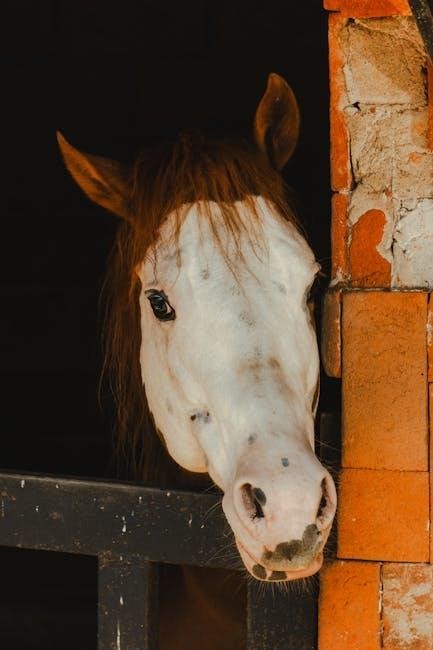
Caring for the Painted Surface
Regular maintenance ensures the longevity of Rust-Oleum Farm and Implement Paint. Clean the surface with mild detergent and water to remove dirt and grime, avoiding abrasive materials that may scratch the paint. Avoid exposing the surface to harsh chemicals, oils, or fuels, as they can degrade the finish. For heavy-duty equipment, periodic washing with a soft-bristle brush and mild soap is recommended. After cleaning, dry the surface thoroughly to prevent water spots. Avoid parking or storing equipment in direct sunlight for extended periods, as UV rays can cause fading. Touch up scratches or chips promptly to prevent rust and maintain the paint’s protective barrier. By following these care tips, you can ensure the paint remains durable and retains its vibrant appearance over time.

Troubleshooting Common Issues
Common issues like uneven coverage or peeling can be addressed by ensuring proper surface preparation and primer application. Drips or runs can be fixed by lightly sanding and recoating.

Addressing Uneven Coverage or Peeling
Uneven coverage or peeling can occur due to insufficient primer application or poor surface preparation. To fix, lightly sand the affected area to smooth it out. Ensure the surface is clean, dry, and free of grease or rust. Reapply primer according to instructions and allow it to dry completely. Once dry, recoat with Rust-Oleum Farm and Implement Paint, applying thin, even layers to avoid drips. Allow each coat to dry as recommended before applying the next. For peeling areas, check for underlying moisture or oil residue, as these can interfere with adhesion. Proper preparation and application are key to achieving a durable, long-lasting finish.
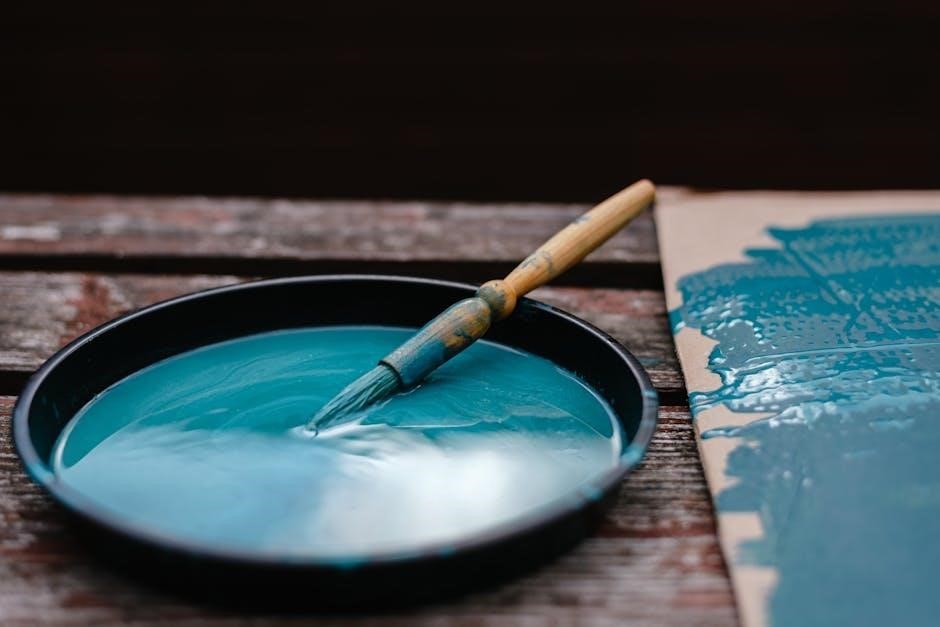
Fixing Drips or Runs in the Paint
If drips or runs appear in the paint, allow them to dry completely before addressing. Sand the uneven areas with fine-grit sandpaper to smooth them out. Clean the sanded area thoroughly with a solvent or soap and water to remove any dust or debris. Once clean and dry, apply a new coat of Rust-Oleum Farm and Implement Paint, ensuring even coverage by spraying steadily and maintaining the recommended distance. Avoid applying too much paint at once. For severe cases, consider reapplying primer and starting over. To prevent future drips, adjust your spray technique, check the weather conditions, and consider using a roller for better control. Proper preparation and careful application are essential for achieving a smooth, professional finish.
Rust-Oleum Farm and Implement Paint offers durable, long-lasting results when applied correctly. Proper preparation, application, and care ensure a professional finish and extended equipment life.
Recap of Key Steps for Success
Success with Rust-Oleum Farm and Implement Paint begins with proper surface preparation, including cleaning, degreasing, and removing rust. Choose the right tools—brush, roller, or spray—for application. Apply primer for maximum adhesion and durability. Follow recommended drying and curing times to ensure a strong finish. Use personal protective equipment and ensure good ventilation. For touch-ups, address scratches or chips promptly and maintain the painted surface regularly. Troubleshoot common issues like uneven coverage or drips by following specific repair steps. Adhering to these steps ensures a professional, long-lasting finish that protects your equipment from the elements and extends its lifespan.
Final Tips for Long-Lasting Results
For long-lasting results with Rust-Oleum Farm and Implement Paint, ensure surfaces are completely clean and dry before application. Avoid painting in direct sunlight or high humidity. Store unused paint in a cool, dry place, tightly sealed; Regularly inspect painted surfaces for wear and address scratches or chips promptly. Avoid using harsh chemicals or abrasive cleaners, as they may damage the finish. Touch-ups should be done with the same paint type for consistency. Properly dispose of leftover paint and materials. By following these tips, you can maintain a durable, professional finish that withstands the rigors of farm use and extends the life of your equipment.
